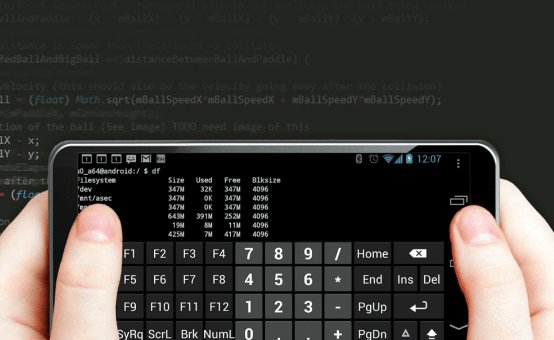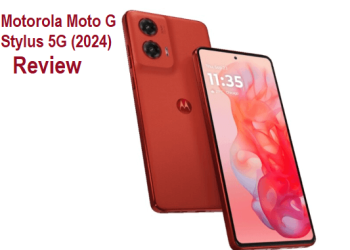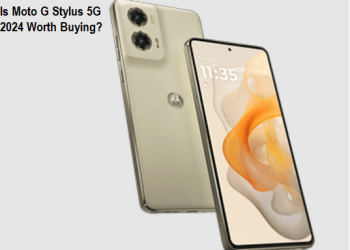The best phone for programmers offers a powerful processor, excellent screen display, and long battery life. A programmer’s phone should be able to complete all the tasks, including work-related and gaming.
A good smartphone will be a happy experience because it will stand firm to the test of time without delay while performing the most necessary tasks. This article lists some recommendations for the best smartphones for programmers in 2024.
What makes a smartphone best for programmers?

Here are a few things that make smartphones suitable for programmers:
Fast Processor
A good smartphone for programmers should have a fast processor to run multiple apps simultaneously without lag. You need this feature to switch between different tasks and perform mobile tasks quickly.
Various apps
Programmers will likely use multiple apps to stay productive and organized. A good smartphone for programmers should be able to access a rich application store and run apps quickly, allowing you to complete your most important tasks while away from your computer.
Large bright screens
Programmers often need to view large amounts of code or text-based information on the go. A large, bright screen makes seeing information and completing tasks much more accessible.
Long Battery Life
A good smartphone for programmers should have a long battery life so that they can stay online whenever needed. A long-lasting battery is essential because you don’t want to be tied to the charger all day.
List of Best Phones for Programmers 2024
For programmers and students, phones with a stylus, fast display hertz, and a decent display are buying triggers, while others find a good camera.
Here are a few selections of the best phones for programmers. All of these are very popular with programmers as of 2024.
1. One Plus 10 Pro 5G
If you want the best developer-friendly phone without breaking the bank, the OnePlus 10 Pro is excellent. Equipped with a Snapdragon 8 processor and 12GB of RAM, it can run even the most resource-intensive programs and games smoothly.
Additionally, the 6.67-inch screen is perfect for mobile development. Compared to other high-end smartphones, it’s a steal. It supports 5G networks and is compatible with the latest programming-related mobile apps.
Overall, if you want to build a native app or test the app to run smoothly, the OnePlus 10 Pro programmer phone is your best choice in 2024.
2. Sony Xperia 1 II
Sony’s Xperia 1 II is a top-of-the-line smartphone, but not everyone will appreciate its mechanics equally. It’s more like a significant device with a great display and long-lasting battery. Also, the camera is very exclusive to Sony’s expertise.
The Sony Xperia 1 II features eye-tracking and pro-grade video and photography capabilities, borrowing from the Alpha camera brand, and expects this change.
It also features 8GB of RAM and 256GB of storage memory. Enough to store thousands of files. If you need more, you can quickly expand the memory using an external SD card slot.
The specs of this phone are that it is the overall flagship, with the Snapdragon 855 flagship chipset matching 8GB of RAM. The phone meets the coding app’s requirements. The Xperia 1 II is also premium on the outside, with an ultra-high 4K display covered with Gorilla Glass 6 with metal in between.
The Xperia 1 II is nothing special. Combining Zeiss optics, eye tracking, and the new Photo Pro software that gives photography enthusiasts more power than images, the Xperia 1 II stands out.
It has up to IP68 resistance to water and dust, a creator mode that ensures accurate colors on compatible apps, including Netflix, and a few other features, including stereo speakers and a 3.5mm headphone jack.
This phone is an excellent option for those learning programming at college.
3. Moto G Stylus
- 6.8 inches max vision display
- Superfast 5G performance
- With the faster Qualcomm Snapdragon processor
- Longer battery life of 5000 mAh
- Android 12 Operating System
Anyone looking for a good value stylus smartphone can get the best deals here. Motorola Moto G Stylus features a stylus and a reasonably large (6.8-inch) LCD screen that the stylus pretty well. This could be a two-in-one choice if you’re a passionate college student and programmer.
You can use it to take notes in the classroom. Alternatively, if you wish, you can use the device for coding, although there may be some lag when moving between multiple apps.
It has 256GB of internal memory, which is essential for many users. Unless you edit videos, you’ll need external storage, such as an SD card—excellent battery life to keep your device running all day.
You’ll miss the fast-charging support that’s so common in smartphones. The 10W charging feature takes about an hour to charge the device entirely.
4. Samsung Galaxy Note 20 Ultra
- With the 6.9 inches Infinity O Display Screen
- You can meet PC power with S Pen and Samsung Notes
- More than 1TB of expandable memory with MicroSD card
- Next level power for development
- Longer battery for longer ta
Galaxy Note 20 Ultra is the perfect phone for almost everyone. No matter what you want to do, the device provides. With 12GB of RAM combined with a powerful Snapdragon, the 865 is more than enough to power the device on demand.
Its capabilities are astounding, from hardcore gaming seasons to detailed photo captures. In addition, the smartphone is equipped with a micro SD slot. 256GB of main memory is sufficient but can be expanded up to 1TB by inserting a microSD card.
The device also features a large screen (6.9 inches) for writing code. You can attach a keyboard to get the most out of it. The AMOLED screen provides vivid colors.
The battery timing is entirely satisfactory as it can be used continuously for 14 to 16 hours. Moreover, it supports fast charging, which takes only 30 minutes to charge to 100%.
5. Google Pixel 6 Pro
- One of the smartest and fastest Pixel phone from Google
- With the latest Google Tensor processor
- Advanced camera system with 4x optical zoom
- With 5 years of security updates
- More than 55 languages available
Those who trust Google more than any brand will appreciate this overwhelming phone from Google. The Google Pixel 6 Pro is a bit more secure than the others.
Well, it’s not just about brands. The packaged features are excellent. In my opinion, this device is also suitable for many people.
It’s fast, so you can open multiple coding apps because 12GB of RAM is backing up the device. Battery life is not an issue with your device. Theoretically, a 5000mAh battery should last around 16 hours of continuous use, but the exact time will vary depending on usage and screen brightness.
Although the processor is not a Snapdragon series, it is undoubtedly a Google-made Tensor powerful chipset capable of delivering the same experience as the Snapdragon 888.
6. Motorola Edge (2021)
- With the 6.8 inches ultra-smooth display
- With the ultra pixel technology and 4K video recording
- Ready For wirelessly connectivity feature
- 5000mAh of long lasting battery
The new Edge 2021 returned to an LCD panel with a refresh rate of up to 144Hz, making for swift animations. A Snapdragon 778G SoC with a 5,000mAh battery is enough for most programmers to power their phones all day while coding.
The Edge features a 108MP primary camera on the front with an 8MP ultra-wide-angle and 2MP depth sensor. The primary camera is sometimes solid and reasonable, but the ultra-wide and depth sensors are overwhelming.
However, the front 32MP camera is above average and can also be used as a webcam, thanks to Motorola software that can be easily paired with a PC.
The 6.8-inch screen is bright and lively, covered with Gorilla Glass 3, but the plastic frame could be improved. At $499, this phone is best for programmers in 2024.
7. Apple iPhone 13 Pro Max
The iPhone 13 Pro Max is another good choice for developers who need a good display and longer battery life combined to make it an almost ideal phone.
Charging is faster, and Touch ID can help, but this is an invincible beast. With excellent performance and cinematic mode limited to 1080P, the phone is also great for everyday use.
8. Samsung Galaxy S22 Ultra 5G
The new Samsung Galaxy S22 Ultra is a more powerful Galaxy Note featuring a built-in S Pen, a brighter display, and faster charging.
This is a fantastic phone, but it is also quite expensive, and the battery life is improved with the 45W of faster charging. This is the best smartphone for Android development.
9. Motorola G9 Plus
The smartphone industry seems to think so because most brands have adopted the implicit rule that even the best phones get the most giant screens and vice versa; mid-range and entry-level phones get smaller screens.
This is what makes the Motorola G9 Plus weird. It is priced as an affordable entry-level phone but has a large 6.8-inch screen. This appeals to those who want a phablet screen but can’t afford the nearly four-digit Pro Maxes and Ultras phones.
In addition to a large, vivid screen suitable for movies or games, the G9 Plus also offers a great Snapdragon 730G and a 64MP camera that captures sharp pictures. Adding a 5,000mAh battery is a winner for those who want more phones for less.
10. OnePlus 9 Pro
- 6.7-inches of large AMOLED display
- With 120Hz refresh rate
- Guaranteed OS updates until Android 13 and security patches until 2024
- It has a 65W fast charger
- The phone also supports wireless charging up to
Suppose you are looking for a high-end Android phone. The Oneplus 9 Pro can’t go wrong. OnePlus is a brand that has always focused on speed. The OnePlus 9 Pro is currently the fastest smartphone on the market.
The phone offers good overall performance for programmers and may be considered by those who prefer the Android ecosystem or like the OnePlus brand.
It is full of all the modern arsenals needed for a phone device. That said, it’s a futuristic phone you can buy. Smartphones come with powerful components made so far, from CPUs that are 888 Snapdragons to 5G cellular technology.
With 12GB of RAM, you can run all your Android coding apps smoothly. You can easily compile large code. With a 4500mAh battery, this smartphone is perfect for anyone looking for long-lasting battery life.
Although there is no micro SD card space, the 256GB of internal space is enormous. Store thousands of coding files and projects without worrying about losing memory.
The OnePlus 9 Pro offers Android’s smoothest and most flexible user interface. The OnePlus 9 Pro is a flagship phone and comes with matching hardware.
11. Apple iPhone 12 Pro Max
- 6.7-inch OLED display provides an accurate color experience
- The phone comes with a LiDAR sensor
- Combined with 6GB of RAM, the A14 Bionic is the ultimate setup any programmer
- 4K Dolby Vision HDR recording
- Best battry l
To buy the best smartphone for programmers, you should consider the iPhone 12 Pro Max, a shopping model. Programmers who are part of the Apple ecosystem and looking for a top-of-the-line product will find the Apple iPhone 12 Pro Max the perfect addition to their collection.
Its cameras also distinguish it as a flagship phone, and it currently has the best cameras in a handheld cell phone device.
The Apple iPhone 12 Pro Max is best for programmers who like big, bulky phones. It outperformed the Samsung Note 20 Ultra in the 3D Mark WildLife graphics benchmark. Copy all the bells and whistles from the base model of the iPhone 12 and then add more. It also currently offers the best battery backup of the entire Apple lineup.
12. Moto G5 Plus
Moto G5 Plus comes with 64-bit ROM. This is the first time Motorola has introduced 64-bit to its devices. This is important on several levels. Users with 64-bit can use the Google Camera HDR+ port. This port has significantly improved the camera quality of many phones that have not performed well.
Developers provide 64-bit ROM for Moto G5 Plus. 64-bit can support a staggering amount of RAM of 2 to the power of 64-bit, which is about 17.2 billion GB.
Motorola’s software is a mixed bag. On the one hand, it’s very close to the essential Android experience with little or no bloatware. It only adds helpful and non-intrusive features compared to AOSP Android, and we’ll also release the kernel source when the time comes.
On the other hand, software’s support for updates is going on in a best-case scenario, and in the worst-case scenario, support for updates will turn out to be bizarre. Motorola has also successfully integrated 32-bit software on phones like the Moto G4 Play.
So far, there is no particular reason behind this defect. One possible reason could be the helplessness of development. Changing the compatibility of a 32-bit device to a 64-bit one is an unsolvable task because the driver is unavailable.
These smartphones suit programmers and anyone wanting to buy a new phone.
Why do I need a good smartphone as a programmer?
Programmers need smartphones that can keep up with their demanding lifestyles. A good smartphone for programmers should be fast, efficient, and have various features to make your life easier. It should also have a large screen to view code and other important information quickly.
Additionally, a good smartphone for programmers should be able to run various apps smoothly, allowing them to switch between tasks efficiently.
Which smartphone operating system is best for programmers: Android or iOS?
Android and iOS have pros and cons.
iOS is a closed platform, so that it can be more limited for programmers in terms of customization and app development. However, for non-programmers, it could be a good choice if you are looking for a more user-friendly and easy-to-use smartphone.
However, Android is a good choice for programmers. Android is a more open platform that allows programmers to customize smartphones and develop apps. Additionally, improved compatibility with various laptops and computers makes it easier to sync your work across devices.
Can I write code on my smartphone?
Yes, you can write code on your smartphone too! Various text editors and integrated development environments (IDEs) are available for Android and iOS. These apps let you write, edit, and run code on your phone, so you can stay productive even when you’re away from your computer.













